
Wine Culture and Information since 2002 - Volume 22
 Wine Culture and Information since 2002 - Volume 22 |
|
Comparing Sangiovese and MontepulcianoAmong the most appreciated red berried grapes of Bel Paese, Sangiovese and Montepulciano are the varieties from which are being produced the main wines of central Italy |
|
Sangiovese and Montepulciano are the main representative red berried grapes of central Italy. The two varieties are virtually present in every region of central Italy - Umbria, Marches, Abruzzo, Latium and Tuscany - both used for the production of countless red DOC and IGT wines. It should however be noticed that in two of these regions it is mainly found just one of the two varieties and almost the absence of the other. In Abruzzo is mainly cultivated the Montepulciano grape - as well as in the neighboring Molise - and Sangiovese is scarcely common; in Tuscany is found the exact opposite condition, with vineyards mainly cultivated with Sangiovese. It is not in fact by chance Montepulciano is mainly associated to Abruzzo as well as Sangiovese to Tuscany, a condition shared - not to be forgotten - with the neighboring Emilia Romagna. Different grapes, Sangiovese and Montepulciano produce quite different wines and not only for reasons associated to the territory.
|
|
Sangiovese directly brings to the mind the red wines for which it is famous Tuscan enology: Chianti, Brunello di Montalcino and Vino Nobile di Montepulciano. In Tuscany Sangiovese is found - alone or blended with other varieties - in most of the red wines produced in the region, including the renowned Morellino di Scansano, name with which it is called Sangiovese grape in the famous town of Maremma. Grape of ancient origins, Sangiovese is among the most common and cultivated varieties in Italy, it is believed it was already used at the times of Etruscans for the production of wines. Sangiovese - like already said - is mainly cultivated in the regions of central Italy, however its presence is also found in Lombardy, Veneto, Sicily, Liguria, Sardinia, Molise, Campania, Apulia and Calabria. Emigrants who left Italy in search of luck in the overseas lands and in Australia, brought with them Sangiovese plants therefore introducing the variety in their destination countries.
Besides Italy, Sangiovese is today cultivated in Australia, California and Argentina, as well as in Corsica, here known with the name of Nielluccio. Variety not so rich in polyphenolic substances, Sangiovese makes wine with a pretty high transparency and an average-strong astringency, it is among the few red berried grapes to be noticed at the taste for the pleasing acidity of its wines. Versatile grape and of many interpretations, of Sangiovese are known two main families taking the name from the size of the berry: Sangiovese Piccolo (Small Sangiovese) - or simply Sangiovese - and Sangiovese Grosso (Big Sangiovese), the latter being famous for Brunello di Montalcino and Vino Nobile di Montepulciano. Two main varieties giving origin to tens of different biotypes: Sangiovese probably is the red berried grape to count the highest number of clones. In wine making Sangiovese is well suited both to the vinification in inert containers - such as steel and cement - as well as to the fermentation and aging in wood, from barrique to large cask.
|
||||||||
|
Montepulciano is one of the most common varieties of central Italy, however the highest spreading is found in Abruzzo and in Molise regions. Montepulciano d'Abruzzo is now very famous, today considered - with merit - among the most renowned and representative wines of Italy. Even in Molise Montepulciano is virtually found in all the red wines of the region, representing the most significant variety. Montepulciano is widely known in Marches and it is found in the main Denominazione d'Origine Controllata (DOC) e Garantita (DOCG) wines of the region, in particular Rosso Conero and Rosso Piceno. The revaluation of Montepulciano grape - a variety having no connection with the homonymous Tuscan town in province of Siena - represents one of the best wine successes in the last years, a process began from the Abruzzo region. In past times Montepulciano was mainly considered as a grape suited to be blended with other varieties, in order to give color and structure to other wines. With time and with facts, Montepulciano is today considered among the most important grapes of Italy. Wines produced with Montepulciano are characterized by a pretty good intensity of color and a transparency most of the times low. The content in polyphenols in Montepulciano gives its wines an evident astringency, a quality which can be also accentuated by the fermentation and aging in wood, a frequent practice for the wines produced with this grape. There however are good wines produced with the aging in inert containers, proving the good versatility of Montepulciano. With this grape are in fact produced wines with different characteristics and styles, from wines of medium structure to wines of robust body, also supported by an alcohol by volume which can be higher than 13.5%. Thanks to the good content in polyphenolic substances, wines produced with Montepulciano have a good longevity and can age in bottle for many years.
|
||||
|
Grapes different one from each other, Sangiovese and Montepulciano make wines having different styles, differences evident from the simple observation of their aspect in the glass. The first wine of our comparative tasting is Donatella Cinelli Colombini's Brunello di Montalcino Progetto Prime Donne, made from 100% Sangiovese and aged in cask for two years. The second wine is Masciarelli's Montepulciano d'Abruzzo S. Martino Rosso Marina Cvetic produced with 100% Montepulciano and aged for two years in barrique. In both cases, the wines are produced with 100% of the grape subject of our comparative tasting, in order to allow a better understanding of the respective qualities and characteristics. The wines are chosen in function of the vintage currently commercialized by respective producers, served at the temperature of 18°C (65°F) and poured in two ISO tasting glasses.
|
|
The differences between Sangiovese and Montepulciano are diverse and evident beginning from what can be observed in the glass. The characteristic determining most of differences in the appearance clearly is the content in coloring substances. As opposed to Montepulciano, Sangiovese has a lower content in coloring substances, a characteristic expressed in its wines with a higher transparency and paler nuances. Both wines show in youth intense and brilliant ruby red colors, sometimes with purple red nuances, although transparency - like already said - is lower in the ones produced with Montepulciano. Moreover, concentration of color and transparency are determined by viticultural factors: in vineyards of low yields, in both cases are obtained deeper colors and lower transparency than the norm. The aging in wood, by means of the slow process of oxidation, gives wines a deeper and more developed color, in particular nuances, where it is possible to watch a garnet red hue. Let's start the appearance analysis of our wines from Donatella Cinelli Colombini's Brunello di Montalcino Progetto Prime Donne. By keeping the glass tilted over a white surface - a white sheet of paper is enough - at the base can be observed an intense and brilliant ruby red. Transparency of this wine, evaluated by putting an object, or simply a finger, between the glass and the white surface, is not so low and allowing the recognition of the object's details. Let's now pass to the second wine of our comparative tasting: Masciarelli's Montepulciano d'Abruzzo S. Martino Rosso Marina Cvetic. Still keeping the glass tilted over a white surface, let's observe the base, in the point of higher thickness of the wine. Here it can be observed a deep ruby red color, more intense and deeper than the previous wine. Also nuances - observed at the edge, towards the opening of the glass - show an evident ruby red color. Transparency of Montepulciano is evidently low, clearly lower than the previous wine.
|
|
Both Montepulciano and Sangiovese make wine with intense aromas recalling red and black berried fruits, as well as flowers. The opening of the two wines is however distinct and recognizable: if in Sangiovese it is black cherry, plum and violet to be mainly perceived, in Montepulciano can be mainly recognized plum, blackberry and black cherry. Fermentation and aging in wood of course give both grapes tertiary and complex qualities, including the inevitable aroma of vanilla, as well as tobacco, chocolate, cocoa and cinnamon. To these aromas, in wines produced with Sangiovese and Montepulciano aged in wood for some months, is frequently found the pleasing balsamic touch of menthol. With time and the aging in bottle, fruit aromas evolve in sensations recalling jams and flower aromas - violet and cyclamen in particular - developing the typical character of dried flowers. The first wine of which we will examine the olfactory profile is Donatella Cinelli Colombini's Brunello di Montalcino Progetto Prime Donne. By holding the glass in vertical position and without swirling, let's proceed with the first smell in order to appreciate opening aromas, that is the aromas of higher volatility. From the glass can be perceived aromas of plum, black cherry and violet, very common in Sangiovese. After having swirled the glass, let's proceed with the second smell which will complete the sequence of aromas with blackberry and blueberry, as well as more complex aromas of vanilla, chocolate, tobacco, licorice, mace and a pleasing balsamic touch of menthol. Let's now pass to the evaluation of Masciarelli's Montepulciano d'Abruzzo S. Martino Rosso Marina Cvetic. The opening of Montepulciano is characterized by plum, blackberry and black cherry, also in this case, very common. The second smell completes the olfactory profile of the wine with the aromas of violet, blueberry, vanilla, licorice, tobacco, chocolate, mace and a pleasing touch of pink pepper. To these aromas is then added leather and the balsamic touch of menthol.
|
|
Differences between Sangiovese and Montepulciano continue to be perceived in the gustatory analysis. Sangiovese has a more crisp and acid character than Montepulciano, which usually is rounder - also because of the effects of alcohol - however keeping a perceivable sharpness. Thanks to the aging in wood, as well as the adoption of quality viticultural procedures with low yields, the two grapes are capable of making wines of remarkable body and structure. The aging in wood also gives roundness in both cases: whether in Sangiovese this procedure is useful in balancing the typical acidity of the grape, in Montepulciano it further accentuates roundness while smoothing, at the same time, the astringency of tannins. Grapes having a good content of sugar, wines produced with Sangiovese and Montepulciano frequently reach pretty high values of alcohol by volume, sometimes higher than 13.5%. Let's start the tasting from Donatella Cinelli Colombini's Brunello di Montalcino Progetto Prime Donne. The attack of this wine, that is the sensation perceived at the first sip, is characterized by a good astringency of tannins to which is added the fresh acidity of Sangiovese. These sensations reach balance thanks to alcohol and roundness given by the aging in cask, giving harmony to the wine. It should be noticed the correspondence to the nose, in particular the flavors of plum and black cherry. Let's now pass to Masciarelli's Montepulciano d'Abruzzo S. Martino Rosso Marina Cvetic. The attack of the second wine is more astringent than the previous one and, in this case, the sensation of acidity is evidently lower, however it can be appreciated a pleasing roundness. The sensations perceived at the attack are soon replaced by the burning effect of alcohol, bringing the wine in balance. Also in this case the correspondence is very good, in particular with the flavors of plum and blackberry. The structure of both wines is clearly robust, however in Montepulciano will be perceived a fuller body. Finally, let's compare the effects and differences between the aging in barrique and in cask in both wines.
|
Wines of the Month |
|
|
|
Score legend Prices are to be considered as indicative. Prices may vary according to the country or the shop where wines are bought |
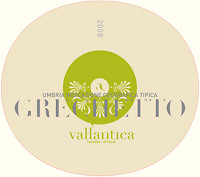
|
|
Grechetto 2008 |
|
| Vallantica (Umbria, Italy) | |
| Grapes: Grechetto | |
| Price: € 7.50 | Score: |
| This Grechetto shows a pale straw yellow color and nuances of greenish yellow, very transparent. The nose denotes intense, clean, pleasing and refined aromas which start with hints of apple, plum and citrus fruits followed by aromas of medlar, hawthorn, pear and hazelnut. The mouth has good correspondence to the nose, a crisp attack and however balanced by alcohol, good body, intense flavors, agreeable. The finish is persistent with flavors of apple, plum and medlar. This Grechetto ages in steel tanks. | |
| Food Match: Pasta and risotto with meat and mushrooms, Mushroom soups, Sauteed white meat | |
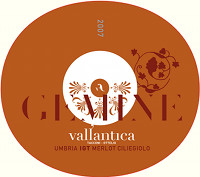
|
|
Gemine 2007 |
|
| Vallantica (Umbria, Italy) | |
| Grapes: Merlot (60%), Ciliegiolo (40%) | |
| Price: € 10.80 | Score: |
| Gemine shows a deep ruby red color and nuances of garnet red, little transparency. The nose reveals intense, clean, pleasing and refined aromas that start with hints of black cherry, plum and black currant followed by aromas of blueberry, violet, vanilla, tobacco and cocoa. The mouth has good correspondence to the nose, a slightly tannic attack and however balanced by alcohol, good body, intense flavors, pleasing roundness. The finish is persistent with flavors of black cherry, plum and black currant. Gemine ages for 12 months in barrique followed by 3 months of aging in bottle. | |
| Food Match: Roasted meat, Braised and stewed meat, Hard cheese | |
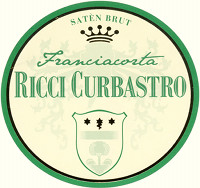
|
|
Franciacorta Satèn Brut 2004 |
|
| Ricci Curbastro (Lombardy, Italy) | |
| Grapes: Chardonnay | |
| Price: € 32.50 | Score: |
| Franciacorta Satèn Brut shows an intense greenish yellow color and nuances of greenish yellow, very transparent, fine and persistent perlage. The nose denotes intense, clean, pleasing and refined aromas which start with hints of bread crust, hawthorn, hazelnut, grapefruit, apple, praline, plum and pear. The mouth has good correspondence to the nose, an effervescent and crisp attack, however balanced by alcohol, good body, intense flavors, agreeable. The finish is persistent with flavors of banana, hazelnut and apple. The base wine ferments in barrique. This Franciacorta Satèn Brut referments in bottle for at least 36 months. | |
| Food Match: Aperitifs, Cheese appetizers, Pasta and risotto with fish and crustaceans, Sauteed crustaceans | |
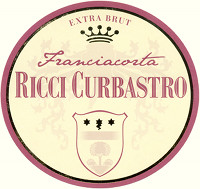
|
|
Franciacorta Extra Brut 2003 |
|
| Ricci Curbastro (Lombardy, Italy) | |
| Grapes: Chardonnay | |
| Price: € 32.50 | Score: |
| This Franciacorta Extra Brut shows a brilliant straw yellow color and nuances of straw yellow, very transparent, fine and persistent perlage. The nose reveals intense, clean, pleasing, refined and elegant aromas that start with hints of banana, citrus fruits and bread crust followed by aromas of pineapple, hawthorn, yeast, acacia, pear, hazelnut, praline, plum and butter. The mouth has good correspondence to the nose, an effervescent and crisp attack, however balanced by alcohol, good body, intense flavors, agreeable. The finish is persistent with flavors of banana, citrus fruits, apple and hazelnut. A part of the base wine ferments in barrique. This Franciacorta Extra Brut referments in bottle for at least 42 months. | |
| Food Match: Roasted fish, Roasted white meat, Stuffed pasta, Broiled crustaceans | |
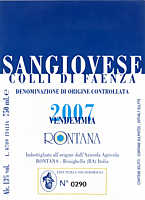
|
|
Colli di Faenza Sangiovese 2007 |
|
| Rontana (Emilia Romagna, Italy) | |
| Grapes: Sangiovese | |
| Price: € 6.80 | Score: |
| Colli di Faenza Sangiovese shows an intense ruby red color and nuances of garnet red, moderate transparency. The nose denotes intense, clean and pleasing aromas which start with hints of black cherry, plum and violet followed by aromas of blueberry, raspberry and cyclamen. The mouth has good correspondence to the nose, a slightly tannic attack and however balanced by alcohol, good body, intense flavors, pleasing crispness. The finish is persistent with flavors of black cherry, plum and blueberry. Colli di Faenza Sangiovese ages for 12 months in steel tanks followed by 12 months of aging in bottle. | |
| Food Match: Stuffed pasta, Broiled meat and barbecue, Sauteed meat, Roasted white meat | |

|
|
Colline Novaresi Vespolina Ricardo della Zoina 2006 |
|
| Cascina Zoina (Piedmont, Italy) | |
| Grapes: Vespolina | |
| Price: € 10.00 | Score: |
| Colline Novaresi Vespolina Ricardo della Zoina shows an intense ruby red color and nuances of garnet red, moderate transparency. The nose denotes intense, clean, pleasing and refined aromas which start with hints of cherry, plum and violet followed by aromas of raspberry, pomegranate, vanilla and chocolate. The mouth has good correspondence to the nose, a slightly tannic attack and however balanced by alcohol, good body, intense flavors, pleasing crispness. The finish is persistent with flavors of cherry, plum and raspberry. Colline Novaresi Vespolina Ricardo della Zoina ages for 12 months in barrique and for 4 months in steel tanks followed by 12 months of aging in bottle. | |
| Food Match: Stuffed pasta, Stewed meat with mushrooms, Broiled meat and barbecue | |

|
|
Ghemme Olegium 2005 |
|
| Cascina Zoina (Piedmont, Italy) | |
| Grapes: Nebbiolo Spanna (95%), Uva Rara (5%) | |
| Price: € 14.00 | Score: |
| Ghemme Olegium shows a brilliant ruby red color and nuances of garnet red, moderate transparency. The nose denotes intense, clean, pleasing and refined aromas which start with hints of cherry, plum and violet followed by aromas of raspberry, strawberry, cinnamon, cocoa and vanilla. The mouth has good correspondence to the nose, a tannic attack and however balanced by alcohol, good body, intense flavors, pleasing crispness. The finish is persistent with flavors of cherry, plum and raspberry. Ghemme Olegium ages for 26 months in cask followed by at least 9 months of aging in bottle. | |
| Food Match: Roasted meat, Stewed and braised meat with mushrooms, Hard cheese | |
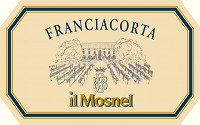
|
|
Franciacorta Extra Brut EBB 2006 |
|
| Il Mosnel (Lombardy, Italy) | |
| Grapes: Chardonnay | |
| Price: € 28.00 | Score: |
| Franciacorta Extra Brut EBB shows a pale straw yellow color and nuances of greenish yellow, very transparent, fine and persistent perlage. The nose reveals intense, clean, pleasing, refined and elegant aromas that start with hints of banana, bread crust and apple followed by aromas of acacia, yeast, hawthorn, hazelnut, plum, praline, butter and hints of vanilla. The mouth as good correspondence to the nose, an effervescent and crisp attack, however balanced by alcohol, good body, intense flavors, pleasing roundness. The finish is persistent with flavors of banana, hazelnut and apple. The base wine ferments and ages in barrique for 5 months. Franciacorta Extra Brut EBB referments in bottle for at least 36 months. | |
| Food Match: Roasted fish, Roasted white meat, Stuffed pasta, Mushroom soups | |
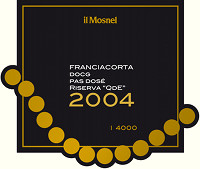
|
|
Franciacorta Pas Dosé Riserva QdE 2004 |
|
| Il Mosnel (Lombardy, Italy) | |
| Grapes: Chardonnay (65%), Pinot Noir (20%), Pinot Blanc (15%) | |
| Price: € 36.00 | Score: |
| Franciacorta Pas Dosé Riserva QdE shows a brilliant straw yellow color and nuances of greenish yellow, very transparent, fine and persistent perlage. The nose reveals intense, clean, pleasing, refined and elegant aromas which start with hints of banana, apple and bread crust followed by aromas of plum, praline, acacia, hazelnut, grapefruit, yeast, tangerine, broom, hawthorn and butter. The mouth has good correspondence to the nose, an effervescent and crisp attack, however balanced by alcohol, good body, intense flavors, agreeable. The finish is very persistent with flavors of banana, apple, plum and grapefruit. Part of the base wine ages in cask. Franciacorta Pas Dosé Riserva QdE referments in bottle for at least 5 years. | |
| Food Match: Roasted fish, Roasted white meat, Stuffed pasta, Broiled crustaceans | |
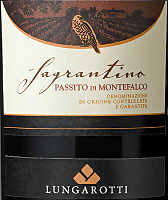
|
|
Sagrantino di Montefalco Passito 2007 |
|
| Lungarotti (Umbria, Italy) | |
| Grapes: Sagrantino | |
| Price: € 28.50 - 375ml | Score: |
| This Sagrantino di Montefalco Passito shows a deep ruby red color and nuances of ruby red, little transparency. The nose denotes intense, clean, pleasing and refined aromas which start with hints of blackberry, black cherry and dried violet followed by aromas of plum, vanilla, tobacco, chocolate, mace and menthol. The mouth has good correspondence to the nose, a sweet and tannic attack, however balanced by alcohol, full body, intense flavors, pleasing roundness. The finish is persistent with flavors of blackberry, black cherry and plum. This Sagrantino di Montefalco Passito ages for 18 months in barrique followed by 15 months of aging in bottle. | |
| Food Match: Jam and dried fruit tarts, Piquant cheese | |
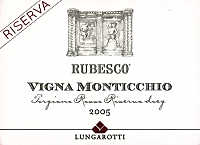
|
|
Torgiano Rosso Riserva Rubesco Vigna Monticchio 2005 |
|
| Lungarotti (Umbria, Italy) | |
| Grapes: Sangiovese (70%), Canaiolo Nero (30%) | |
| Price: € 23.80 | Score: |
| Torgiano Rosso Riserva Rubesco Vigna Monticchio shows an intense ruby red color and nuances of garnet red, moderate transparency. The nose reveals intense, clean, pleasing, refined and elegant aromas which start with hints of black cherry, plum and violet followed by aromas of blueberry, blackberry, raspberry, vanilla, tobacco, chocolate, cinnamon, mace and menthol. The mouth has good correspondence to the nose, a slightly tannic attack and however balanced by alcohol, good body, intense flavors, agreeable. The finish is persistent with flavors of black cherry, plum and blueberry. Torgiano Rosso Riserva Rubesco Vigna Monticchio ages for 12 months in barrique followed by more than 3 years in bottle. | |
| Food Match: Roasted meat, Braised and stewed meat, Hard cheese | |
|
||||||||
|
DiWineTaste Polls
|
| |||||||
Privacy Policy | |||||||


| Copyright © 2002-2024 Antonello Biancalana, DiWineTaste - All rights reserved |
| All rights reserved under international copyright conventions. No part of this publication and of this WEB site may be
reproduced or utilized in any form or by any means, electronic or mechanical, without permission in writing from DiWineTaste. |